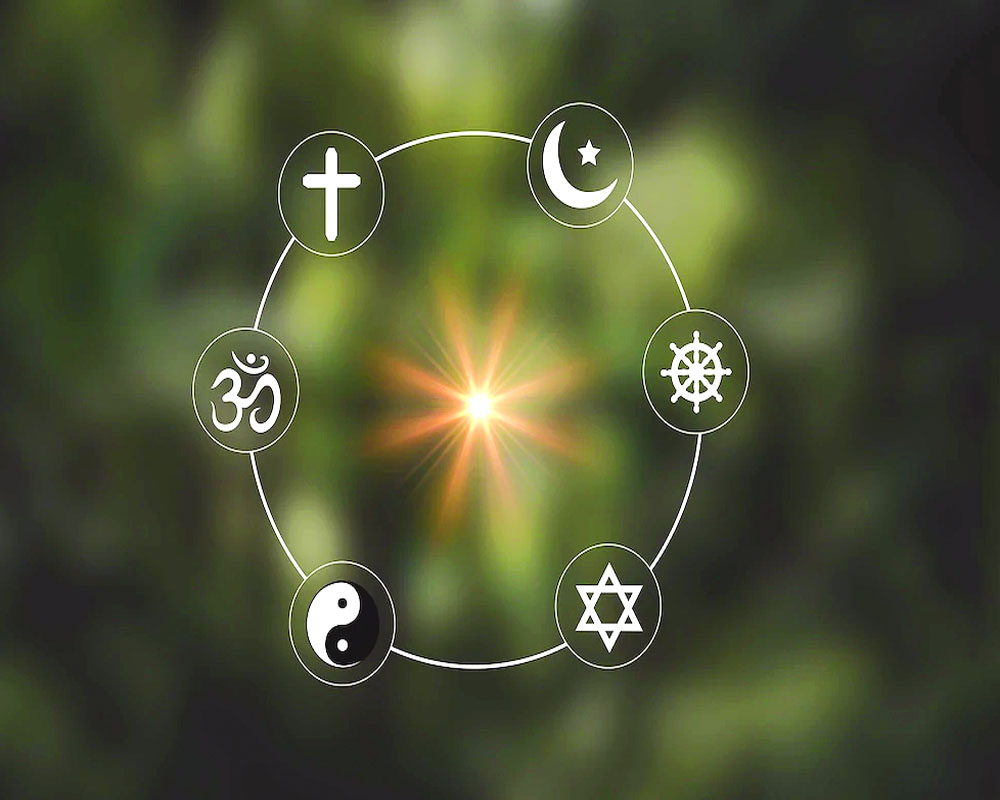As India moves forward, it must consciously embrace its rich diversity, essential for nurturing a harmonious society that grows together
The inauguration of the New Parliament Building has heralded a new history of India in its 75th year of Independence. Leaving apart the controversies wrangling in different corridors, we must realize that the value of democracy lies in upholding the essence and spirit of this new development and with it the whole idea of multiculturalism and the syncretic tradition that binds this nation of 140 crore Indians together. ‘Sarva Dharma Prarthana’ or Inter-Faith Prayer is one of the great steps in this direction which happened at the inaugural programme on May 28.
India, known for its rich cultural tapestry and religious diversity, has long embraced the idea of syncretism and multiculturalism. This inherent acceptance of diverse beliefs and traditions is exemplified through inter-faith prayers, which hold great significance in various ceremonies across the country. These prayers serve as a unifying force, promoting harmony, tolerance, and cultural integration. Inter-faith prayers at the inaugural ceremony, symbolize the nation's commitment to embracing and maintaining its cultural syncretism. By incorporating inter-faith prayers into the ceremony, the diversity that India stands for was celebrated. This inclusive approach not only strengthens the social fabric but also sends a strong message to the world about India's commitment to secularism and pluralism. Inter-faith prayers hold immense significance in India, as they bring together people from different religious backgrounds/ faith, fostering a sense of unity and shared purpose. India's cultural tapestry is intricately woven with the threads of various religions, each contributing to the vibrant fabric of society. From Hinduism, Buddhism, and Jainism to Islam, Christianity, Sikhism, the Baha’i, Judaism, Zoroastrianism and others, India has been a melting pot of diverse religious beliefs, rituals, and practices. ‘Sarva Dharma Prarthana’ acts as the glue that holds this mosaic together, fostering an environment of mutual respect and peaceful coexistence. These prayers serve as a powerful reminder of our shared humanity and transcend religious boundaries, emphasizing the common values and aspirations that bind us as a nation. As the seat or Temple of democracy, the Parliament represents the voice of the people and their diverse aspirations. symbolizing the inclusive spirit of India, for India's syncretic traditions are deeply embedded in its cultural fabric. The country's history is replete with instances where different religious beliefs and practices have intermingled and influenced each other. This syncretism is evident in various aspects of Indian life, including festivals, rituals, and philosophical ideologies. Festivals such as Diwali, Eid, Christmas, and Guru Nanak Jayanti to name a few, are celebrated with equal enthusiasm by people of different faiths. These celebrations not only showcase cultural diversity but also provide an opportunity for individuals to learn about and appreciate different religious traditions.
It is undeniable that India's artistic heritage spans millennia, with influences from various cultures and civilizations. The intricate carvings of the ancient temples in Khajuraho, the Mughal architecture of the Taj Mahal, and the vibrant frescoes of Rajasthan are just a few examples of how different artistic styles have merged to create a distinct Indian aesthetic. By appreciating and preserving these art forms, India not only showcases its multicultural heritage but also encourages dialogue and understanding among diverse communities. India's rich spiritual heritage and its embrace of diverse philosophies have given rise to a syncretic tapestry, interwoven with the teachings of renowned saints and philosophers throughout history. Kabir, the 15th-century poet and mystic, whose teachings emphasized the unity of all religions, says, “Dheere dheere re mana, dheere sab kuch hoi. Mali seenche sau ghada, ritu aaye phal hoyeâ€, embodies the essence of cultural syncretism by emphasizing the gradual evolution of spiritual growth and the universality of divine wisdom.
Swami Vivekananda also stressed the importance of embracing diversity and unity among religions. He famously said, "I am proud to belong to a religion which has taught the world both tolerance and universal acceptance. We believe not only in universal toleration but we accept all religions as true." Conceptualized by Swami Vivekananda himself and designed and developed by his engineer brother-monk Swami Vijnanananda, the Ramakrishna Mission in Belur Math is a clear example of an architectural marvel that beautifully embodies syncretic traditions, blending elements from various Indian architectural styles, with its ornate carvings, domes, and spires, along with Islamic arches and intricate floral motifs and further incorporating elements reminiscent of Gothic architecture, such as stained-glass windows.
Mahatma Gandhi too emphasized the importance of embracing diverse cultures and traditions without losing one's own identity. He envisioned a society where different cultures coexist and enrich one another, fostering understanding and unity. As India embarked on a new chapter with the inauguration of its New Parliament Building, it is essential for all of us to value such wisdom and teachings that have inspired individuals and Nations alike. By promoting interfaith dialogue, preserving linguistic diversity, celebrating artistic expressions, and embracing such vast and versatile traditions, India can continue to be a shining example of unity in diversity in her global endeavour to become a global power under the dynamic leadership of Prime Minister Narendra Modi.
(The writer is Programme Executive, Gandhi Smriti and Darshan Samiti)


























